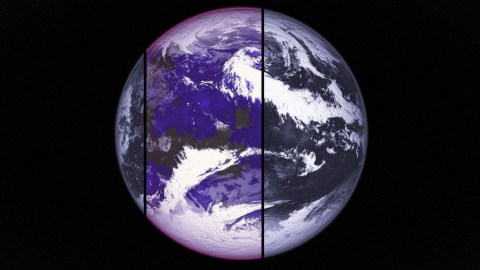Scientists shocked by massive emissions of a banned, ozone-destroying chemical

Scientists report that levels of a banned, ozone-depleting chemical are on the rise in Earth’s atmosphere, but the culprit remains a mystery.
The chemical in question is CFC-11, which was once used in refrigeration and degreasers until it became one of several chlorofluorocarbons banned by the Montreal Protocol in 1987. That agreement, a response to a large hole in the ozone over Antarctica, was ratified by all U.N. members. The hole in the ozone has since diminished.
But shockingly, emissions of CFC-11 have been rising since 2013, according to a study published on Wednesday in the journal Nature.
“It’s the most surprising and unexpected observation I’ve made in my 27 years,” said study lead author Stephen Montzka, a research chemist at the National Oceanic and Atmospheric Administration. “Emissions today are about the same as it was nearly 20 years ago.”
It’s unclear who’s responsible for the increase of the chemical into the atmosphere, where it can last 50 years. However, measurements listed in the study suggest it’s being emitted somewhere around China, Mongolia and the Koreas.
“Somebody’s cheating,” Durwood Zaelke, founder of the Institute for Governance and Sustainable Development and an expert on the Montreal Protocol, told the Washington Post. “There’s some slight possibility there’s an unintentional release, but…they make it clear there’s strong evidence this is actually being produced.”
There’s a slight chance the increase might be explained by other factors—changing atmospheric patterns, an increase in building demolitions that contain residue of the banned substance. But these don’t fully explain the sharp increase seen in recent years, which amounts to about 13 billion grams annually over the past several years.
“These considerations suggest that the increased CFC-11 emissions arise from new production not reported to [the U.N. Environment Program’s] Ozone Secretariat, which is inconsistent with the agreed phase-out of CFC production in the Montreal Protocol by 2010,” the researchers wrote.
What’s also mysterious is why anyone would want to use CFC-11, considering cost-effective alternatives have been on the market for years.
“It is not clear why any country would want to start to produce, and inadvertently release, CFC-11, when cost-effective substitutes have been available for a long while,” Robert Watson, a former NASA scientist, told the Post. Post. “It is therefore imperative that this finding be discussed at the next Ministerial meeting of Governments given recovery of the ozone layer is dependent on all countries complying with the Montreal Protocol (and its adjustments and amendments) with emissions globally dropping to zero.”
The production of CFC-11 amounts to a violation of international law, but perhaps more importantly it represents a blow to the decades-long work scientists have been conducting to preserve the ozone layer, which shields us from the sun’s ultraviolet radiation.
“This treaty cannot afford not to follow its tradition and keep its compliance record,” Zaelke said. “They’re going to find the culprits…This insults everybody who’s worked on this for the last 30 years. That’s a tough group of people.”





